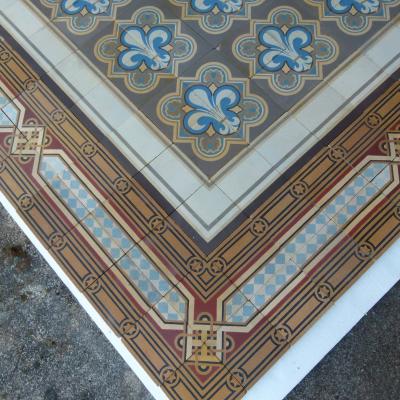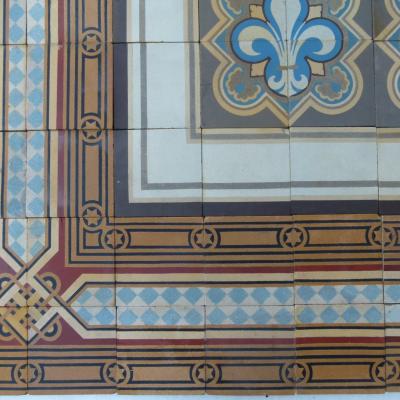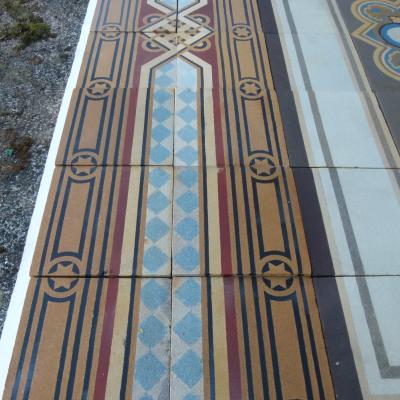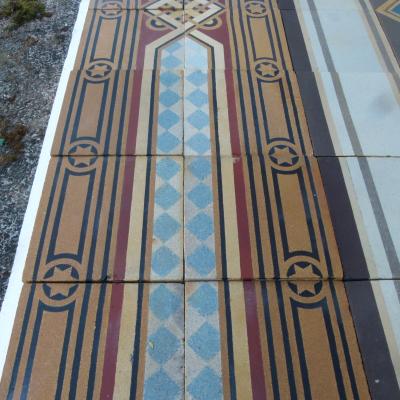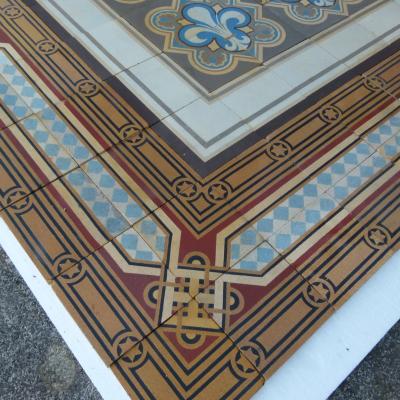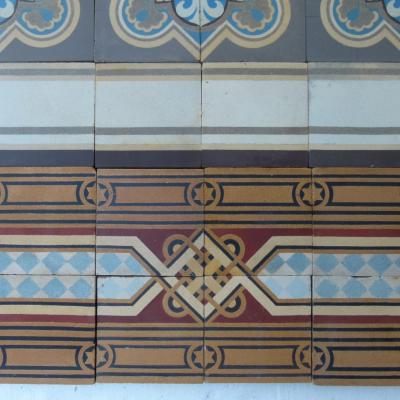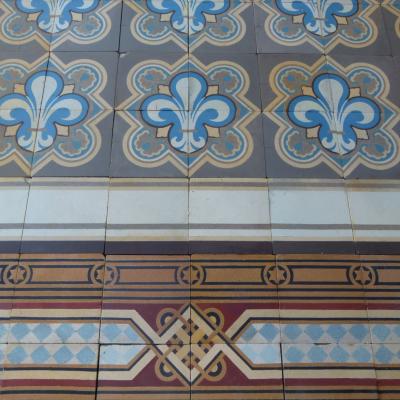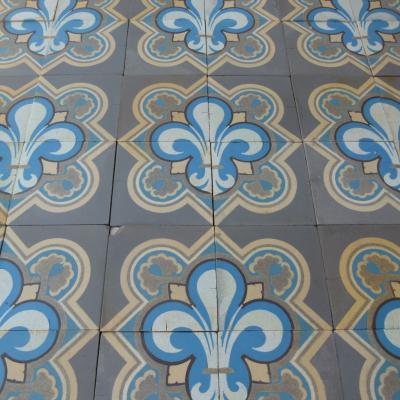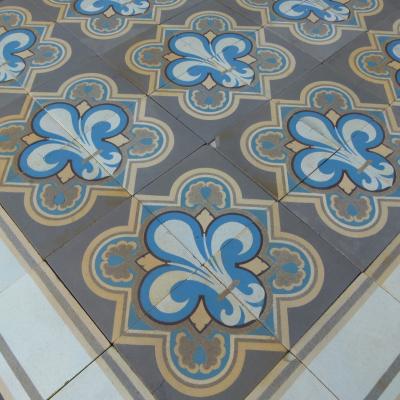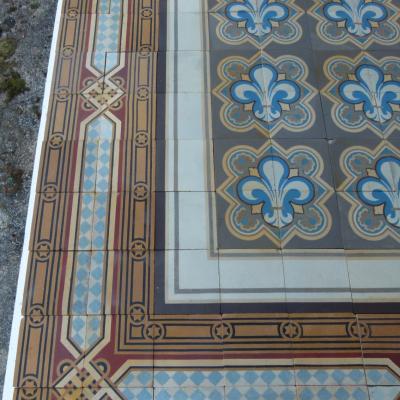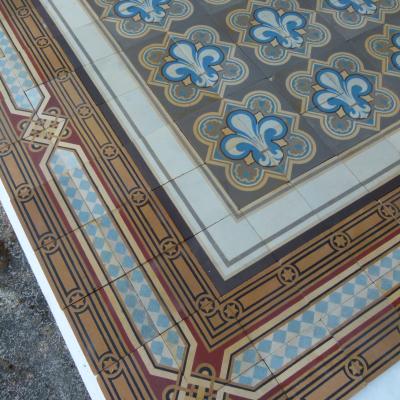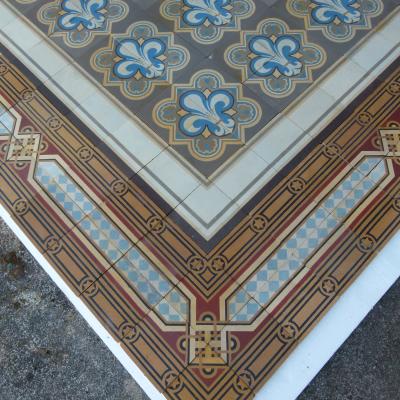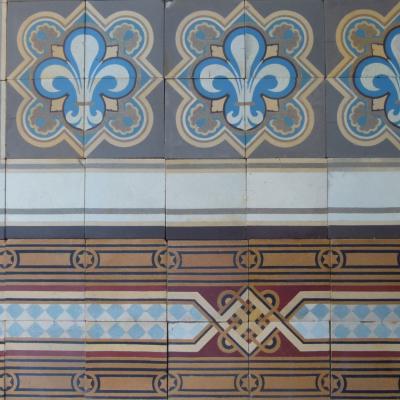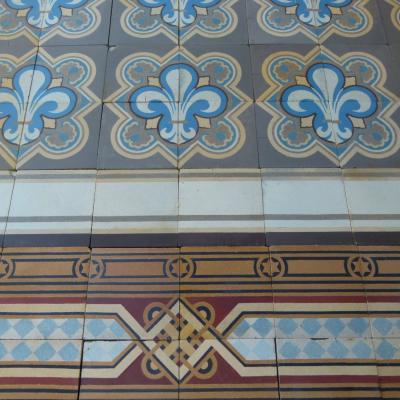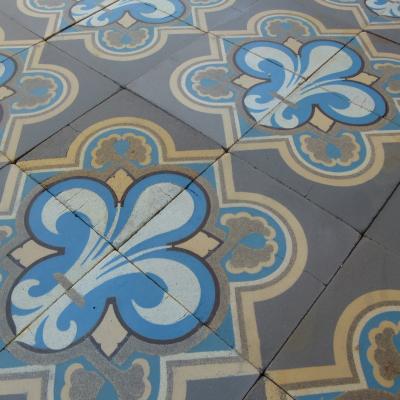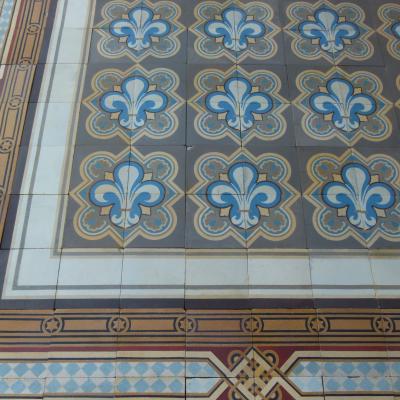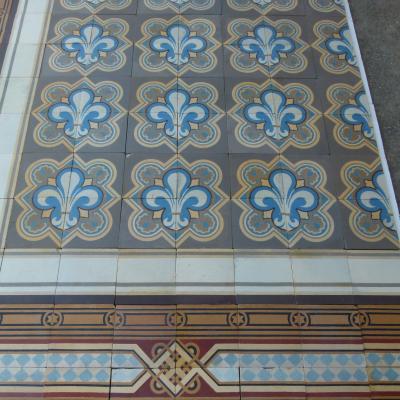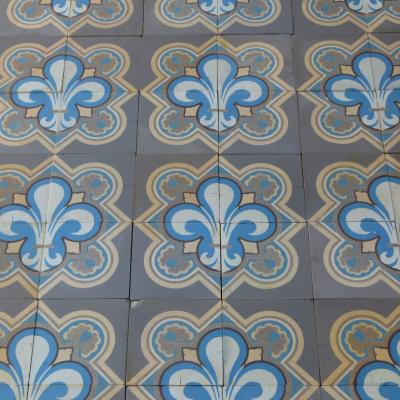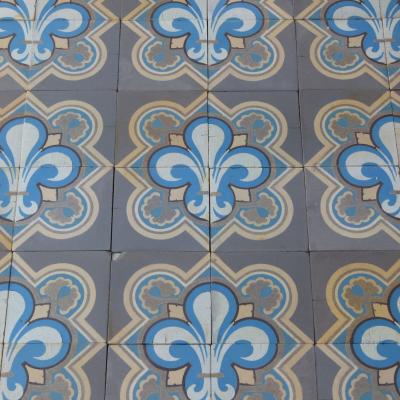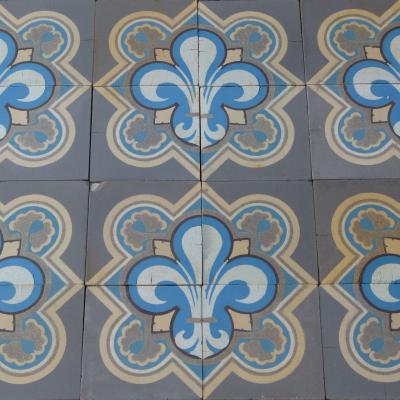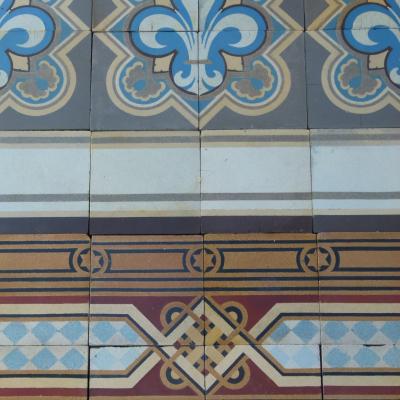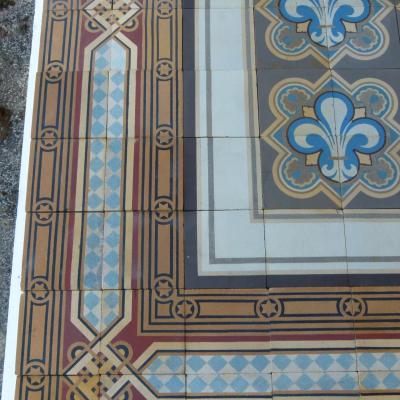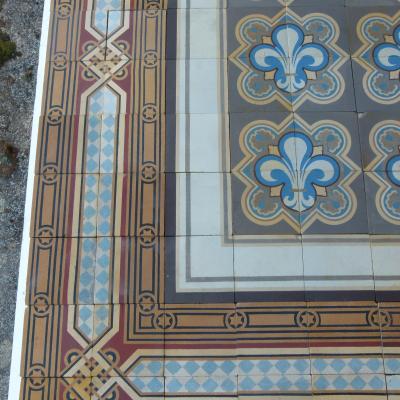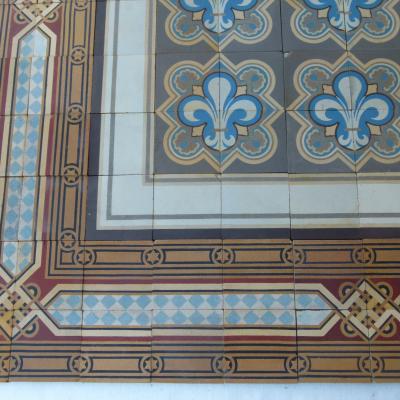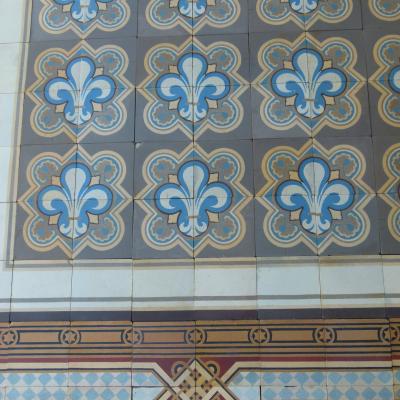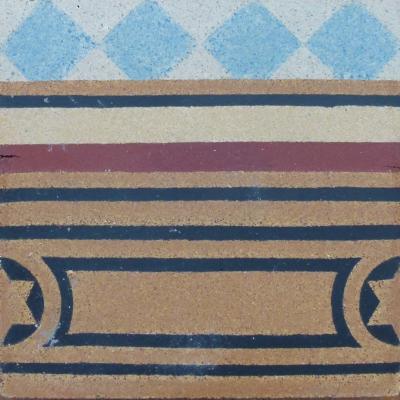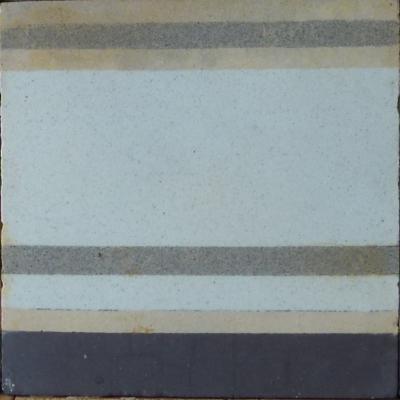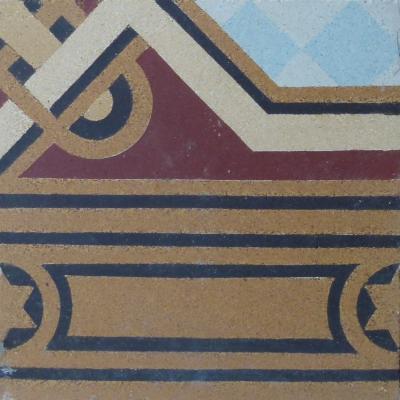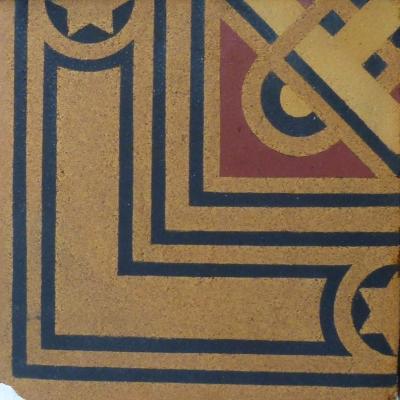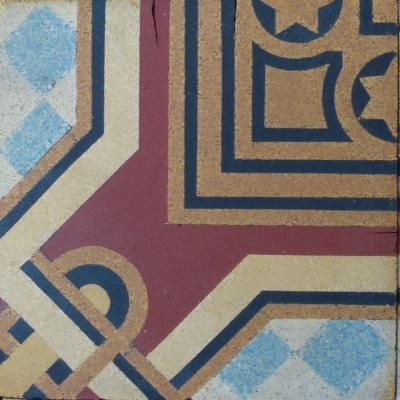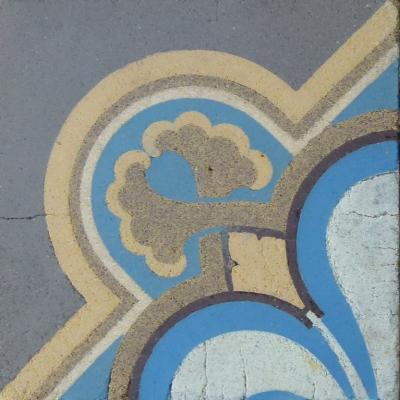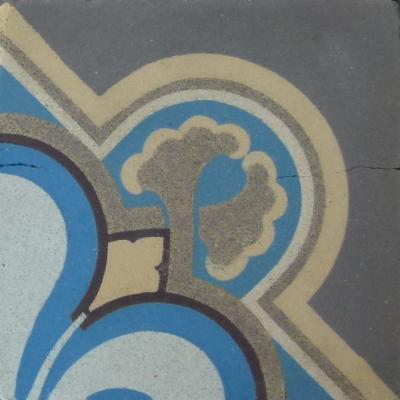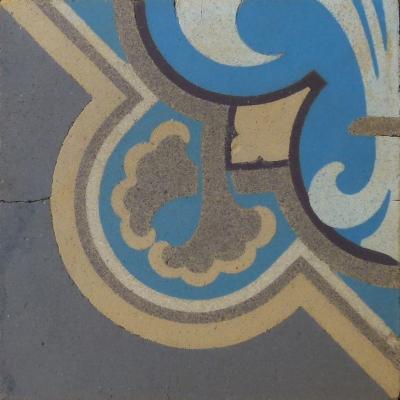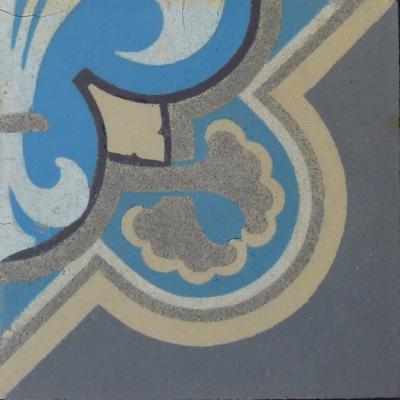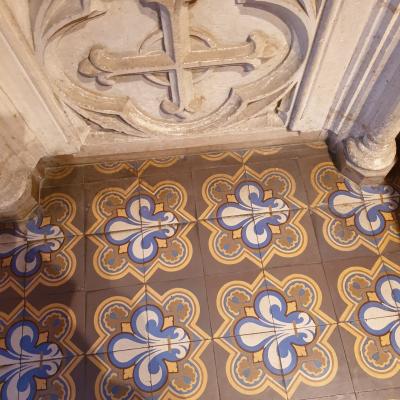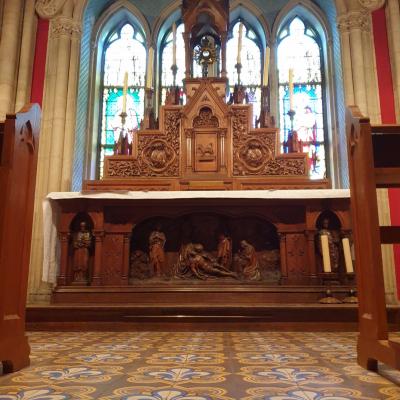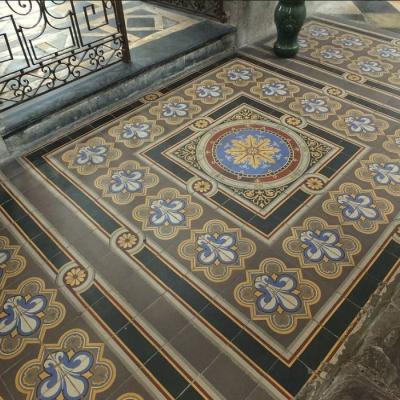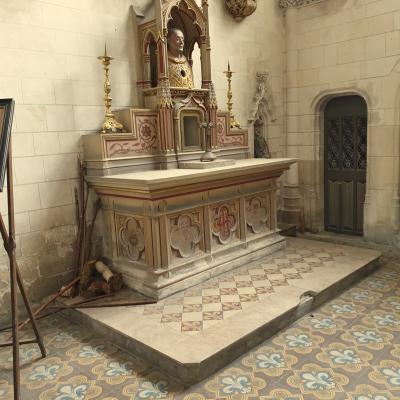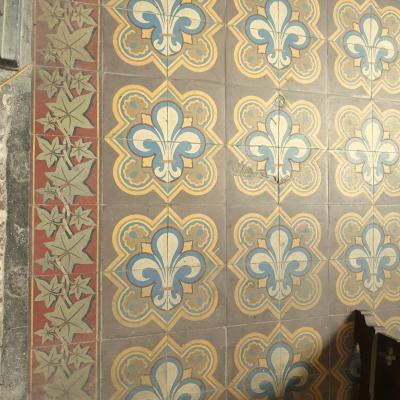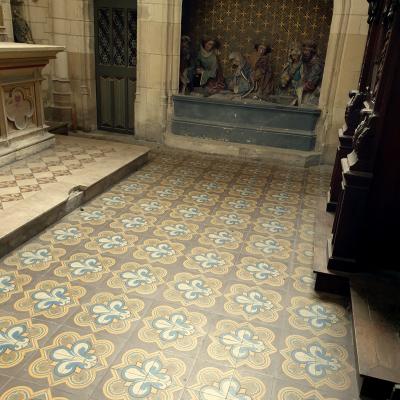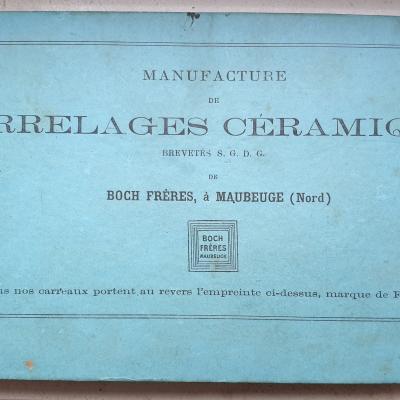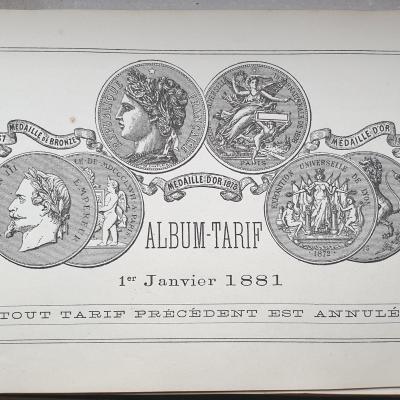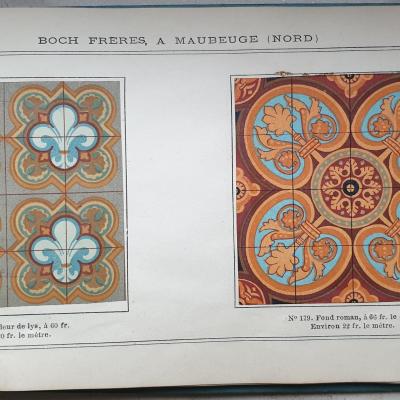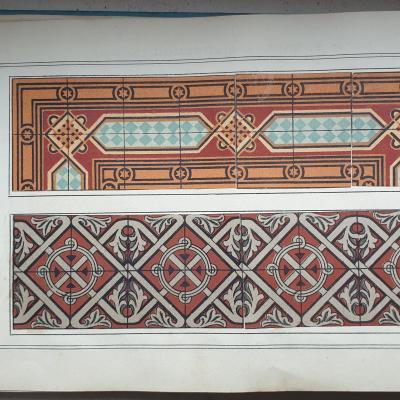Rare & Regal - 16.25 m2 Fleur de Lys themed French ceramic - 1881
A rare, handmade Boch Freres ceramic floor manufactured c.1881 consisting of 17.5cm square field and border tiles. The triple border series alone creates a width of 52cm / 20 inches. We include in the photography gallery scans from the original 1881 Boch Freres catalogue presenting the tiles.
The same floor can be found in period French government buildings as well as churches and we have included some examples of their laying in such fine properties. These include Saint Omer Cathedral.
Fleur de Lys themed, the four individual field tiles making up the fleur motif are framed by a single same size plain border and an ornate back to back border for which the 8 internal and external border corner tiles have been recovered.
Now professionally restored it arrives ready to relay, years of old mortar and wax now removed. The patina is rich and antique as the high resolution photographs show with some tiles displaying small chips or edge nibbles.
This is a grand and regal floor from the belle epoque and deserving of being the heroine in any rooms decor.
Total surface area - 16.25 m2+ / 175 sq ft+
Country of Origin - France
Manufacturer - Carrelages Ceramiques Boch Freres, Maubeuge (NORD)
Dating - Late 19th, early 20th century
Tile size - 17.5cm / 6.9 inches
Tile thickness - variable but generally +/- 16mm
Weight per tile - 1.3kg / 46 ounces
Border lay - Triple borders:- one plain and two identical back to back
Underfloor heating systems - Yes
Indoor / Outdoor application - Both
Tile quantities:-
Field tiles - Top left 80 tiles, Top right 79 tiles, Bottom left 84 tiles, Bottom right 77 tiles. Total of 9.8 m2 / 105.5 sq ft.
Large border PLAIN - 64 tiles plus 4 corners - 2m2 / 21.5 sq ft. or 11.6 linear metres / 38 linear feet
Large border MOTIF - 121 regular, 10 each of the junctions plus 4 internal and 4 external corners 4.6m2 / 49 sq ft. or 11.1 linear metres / 36.5 linear ft. as a back to back double border lay.
Tile size, thickness and tones
Antique tiles were most commonly made in single or two tile moulds. Before current computer automation methods their moulds were made my hand and the colour slips mixed by eye. Kiln temperatures could also be variable, as could the firing time. The result is that often tiles display subtle size and thickness variations and there can be tonal variations in colours, owing to the slip mixing and/or firing time. All of this makes these handmade tiles unique and adds to their charm. Some floors display their subtle variations in size and tones, some not, but when photographing we always take a random section of the floor so that it is representative of the whole. A tiler should always dry lay a section of the tiles to familiarise himself with them before starting to fix lay.
Condition
All of our floors go through rigorous quality control during the restoration process. We include tiles which have groutable small chips and edge nibbles, expected of tiles more than 100 years old , but include for free any rejects, which the tiler can then use for offcuts. The photographs in the gallery are of a c.1.5m2 / 16 sq ft.randomly taken sample of the larger floor and therefore representative of the whole floors condition and patina.
Can we help?
If you can provide a technical drawing, or a simple sketch with key dimensions, we are happy to assist in evaluating and recommending the best layout of the floor in your area of choice..
MAD113



